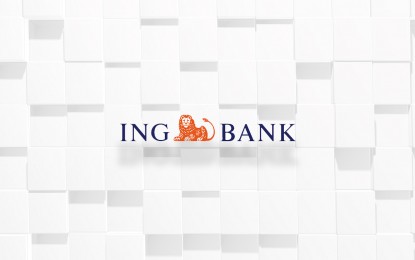
MANILA -- Improvement in capital formation, along with an increase in consumer and government spending, would allow the Philippine economy to post a 6% growth this year.
In a report Monday, ING Bank Manila senior economist Nicholas Mapa said the expected 75 basis points reduction in the Bangko Sentral ng Pilipinas’ (BSP) key rates this year will be a factor in boosting domestic corporate lending.
He forecasts another 25 basis points slash in the BSP’s key rates during the rate setting meet of the policy-making Monetary Board (MB) on September 26.
“The pledge to walk back the 2018 rate hike cycle will be a welcome sight for both consumers and corporates as Governor (Benjamin) Diokno returns monetary policy settings back to “normal” mode after it had peaked to “crisis mode” in 2H (second half) 2018,” he said.
The MB hiked the BSP’s key rates by a total of 175 basis points last year to help address the elevated inflation rate, which peaked at 6.7 percent in September and October, particularly due to big jumps in the prices of rice, a staple food in the country.
The rate cuts, along with the non-monetary measures implemented by the government such as the release of rice stocks from all National Food Authority (NFA) warehouses and the eventual signing of the rice tarrification law, resulted in the deceleration of domestic rate of price increases to 1.7 percent last August.
Mapa noted that since the supply-side factor that pushed inflation up last year has been addressed, “Diokno looks to salvage the growth momentum at a time when the economy needs it the most.”
He said the expected 75-basis-point cut in the BSP rates this year “will hopefully jumpstart corporate lending as well as sustained loans to the auto sector to improve the contraction seen in capital formation posted in 2Q 21019.”
“With households back to their voracious spending patterns (take note of resurgence in consumer loans after inflation dipped), government spending back online, the Philippines will only be able to chase 6% growth if the stalwart pillar of capital formation gets a nice jumpstart from BSP’s policy easing,” he said.
“Only with these three humming along can we look to unlock 6% growth for 2019 and beyond,” he added.
The domestic economy, as measured by gross domestic product (GDP), posted an average growth of 5.5% in the first half of the year, below the government's 6 to 7% target for the year.
Authorities traced this to the impact of the delay in the approval of this year's national budget, which hampered the implementation of programmed projects, particularly infrastructure projects.
Economic managers, however, remain confident of the achievement of the growth target this year with the help of the catch-up plan particularly of the Department of Public Works and Highways and the Department of Transportation. (PNA)
